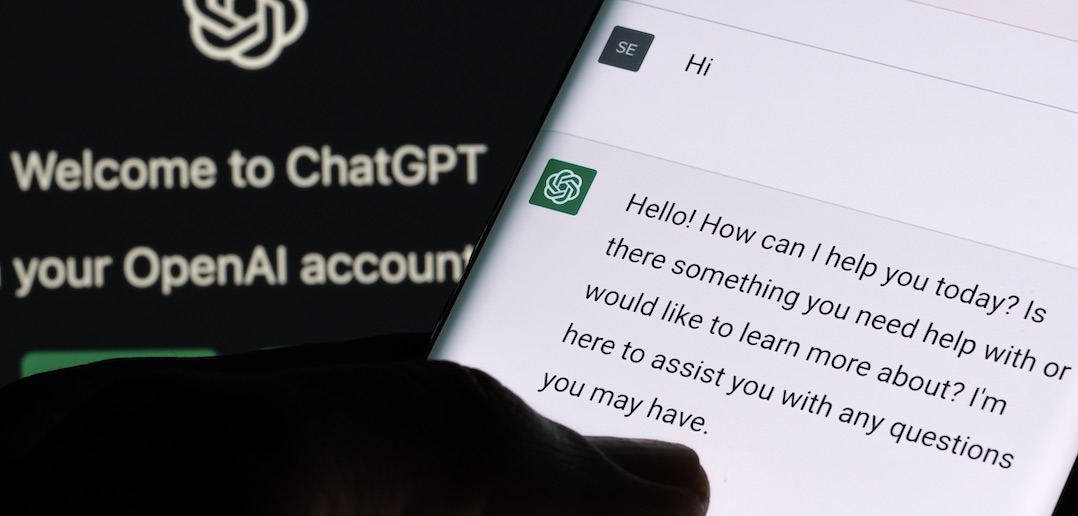Popular programs like ChatGPT can solve complex math problems, create original music and art, and write stories better than an actual person—and sound like one, too. This has triggered a big question among educators: How will AI affect assignments, assessments, and originality in the classroom?
Copyright: news.fordham.edu – “How Do We Use Artificial Intelligence in the Classroom?”
 On Feb. 7, Fordham’s Graduate School of Education hosted a panel discussion at the Lincoln Center campus, “Threat or Opportunity? The Impact of AI on Education,” where five experts explored how AI can impact students at all grade levels—and why sometimes, we learn better without fancy chatbots.
On Feb. 7, Fordham’s Graduate School of Education hosted a panel discussion at the Lincoln Center campus, “Threat or Opportunity? The Impact of AI on Education,” where five experts explored how AI can impact students at all grade levels—and why sometimes, we learn better without fancy chatbots.
A Tool for Bilingual Learners

Rogelio Fernández
Artificial intelligence can provide personalized learning experiences for students, particularly bilingual learners, said Rogelio Fernández, Ph.D., GSE ’95, an education consultant and adjunct professor at Fordham and CUNY. AI can not only provide multisensory engagement but also provide a low-risk environment where students can learn English, he said.
“They can put on headphones and listen to the English language, perhaps poems and songs, and take risks that they did not take in general classrooms where there are four, five students who are English speakers—who might make fun or bully them because of their accent or because of their incorrect grammar,” said Fernandez.
Thank you for reading this post, don't forget to subscribe to our AI NAVIGATOR!
AI can also be a time-saving tool, said Layla Munson, a New York City Department of Education administrator and GSE doctoral student in curriculum and instruction. It can generate a basic first draft of an assignment or project, which students can enhance, she said. In addition, AI could help students below grade level catch up with their peers.
Potential Perils of AI

Nicole Zeidan
However, one of the biggest issues with programs like ChatGPT is bias, said the experts. ChatGPT, for example, relies on data available to the general public in order to provide information to users. But the sourced data focuses on dominant voices, while leaving out the marginalized.
AI can also widen the educational divide for already marginalized students, said Nicole Zeidan, Ed.D., Fordham’s assistant director of emerging educational technology and learning space design and an adjunct professor at GSE.
“Some of those digital divides can include the lack of access to the actual technology itself, a lack of internet connectivity … the lack of devices … biases in AI, and algorithms in data can have a lack of cultural sensitivities,” said Zeidan. “The technology may not be able to understand certain perspectives or experiences in different cultures as well.”[…]
Read more: www.news.fordham.edu


Popular programs like ChatGPT can solve complex math problems, create original music and art, and write stories better than an actual person—and sound like one, too. This has triggered a big question among educators: How will AI affect assignments, assessments, and originality in the classroom?
Copyright: news.fordham.edu – “How Do We Use Artificial Intelligence in the Classroom?”
A Tool for Bilingual Learners
Rogelio Fernández
Artificial intelligence can provide personalized learning experiences for students, particularly bilingual learners, said Rogelio Fernández, Ph.D., GSE ’95, an education consultant and adjunct professor at Fordham and CUNY. AI can not only provide multisensory engagement but also provide a low-risk environment where students can learn English, he said.
“They can put on headphones and listen to the English language, perhaps poems and songs, and take risks that they did not take in general classrooms where there are four, five students who are English speakers—who might make fun or bully them because of their accent or because of their incorrect grammar,” said Fernandez.
Thank you for reading this post, don't forget to subscribe to our AI NAVIGATOR!
AI can also be a time-saving tool, said Layla Munson, a New York City Department of Education administrator and GSE doctoral student in curriculum and instruction. It can generate a basic first draft of an assignment or project, which students can enhance, she said. In addition, AI could help students below grade level catch up with their peers.
Potential Perils of AI
Nicole Zeidan
However, one of the biggest issues with programs like ChatGPT is bias, said the experts. ChatGPT, for example, relies on data available to the general public in order to provide information to users. But the sourced data focuses on dominant voices, while leaving out the marginalized.
AI can also widen the educational divide for already marginalized students, said Nicole Zeidan, Ed.D., Fordham’s assistant director of emerging educational technology and learning space design and an adjunct professor at GSE.
“Some of those digital divides can include the lack of access to the actual technology itself, a lack of internet connectivity … the lack of devices … biases in AI, and algorithms in data can have a lack of cultural sensitivities,” said Zeidan. “The technology may not be able to understand certain perspectives or experiences in different cultures as well.”[…]
Read more: www.news.fordham.edu
Share this: